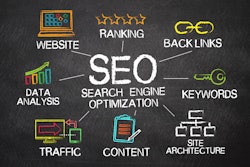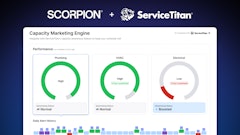
Every year, we analyze the average Google Ads results for landscaping and lawn care businesses and monitor trends based on our clients’ data. It serves a dual purpose for us to educate our clients and the industry on what to expect when paying for Google Ads.
There are a few things we should establish before moving forward.
1. This data comes from 61 landscapers spending a total of $225,000 in 2024.
2. This data assumes you’re accurately tracking leads from Google Ads such as phone calls, form fills and emails using conversion tracking.
3. These numbers assume you are only running Search ads and not using broad match keywords or running ads on the Search Partners or Display Networks.
Okay, let’s jump in.
How do you stack up?
The average cost-per-click was $3.65, and the average cost-per-lead (CPL) was $87.80. A lead is after someone clicks on an ad, they visit your website and contact you (referred to as cost / conv in Google Ads). We’re able to track this through Google Analytics via Google Tag Manager If you don’t have lead tracking set up, your cost per acquisition is going to look a lot worse in your account. That’s not to say your ads are performing badly. You just don’t have visibility without the tracking in place.
On the impressions and clicks side of things, if the number of clicks you get on your ads is divided by the number of times your ad shows up, that’s your click-through rate. If yours is above 5%, you’re doing better than our average.
How much should you spend on Google Ads?
There’s a lot that goes into answering this question.
If your service area has a population of fewer than 100,000, we recommend a lower monthly budget. We also recommend you run ads yourself and don’t hire an agency. The management fee on top of the ad spend isn’t going to make the cost-per-lead worth it.
There are a lot of things that can affect your budget. For starters, you shouldn’t give Google all of your money. Google Ads is a demand-based marketing platform. That means you can only spend money on people actually searching. If no one is searching, you can’t make them search.
If you give Google $10,000, they will find a way to spend $10,000 or as much of it as they can. What usually happens here is instead of getting more clicks, Google raises your cost-per-click. If you’re used to $5 clicks, then you’ll be looking at $30 clicks. The leads aren’t worth it at that price.
Having said that, a few things we generally look at for budget recommendations include:
- The number of services you offer (i.e., keywords to target)
- Size of the service area (population)
- Seasonality
A lawn care company that offers only organic lawn care services to an area population of 1,000,000 people may have the same maximum budget as another business that offers all lawn care and landscaping services in an area that only has 200,000 people. In this example, the market of the organic lawn care company is limited by the service offering they have which reduces the total opportunity in Google Ads.
The lowest spending months are between December and January, which isn’t shocking. The minimum is $314.79 in January. The highest spending month is April at an average of $1,070.25.
This is important. Everyone seems to want to throw money at March to make things happen. March is the month to invest in outbound marketing strategies like door hangers, postcards and Facebook ads. Google is demand-driven. People don’t make the serious searches until April. That’s when you want to go all in.
Adjust your ad spend based on the month
If you're in a more seasonal climate, you’re going to want to reduce your ad spend to your minimum budget or stop ads altogether. You’ll want to increase your budget in March but not too much. By April, you should be spending almost 4x your minimum monthly budget. If our clients are spending $300 as a minimum, they can expect to spend between $1,000 and $1,200 as a safe, maximum budget in April. However, be vigilant as April turns into May and May turns into June. You’ll want to reduce your ad spend by almost half of your maximum after May. If you keep your budget too high into the summer months, Google will eat your budget.
How your budget affects performance
At our agency, we focus on cost-per-lead before everything. We don’t care about the cost-per-click, conversion rate, or click-through rate so long as we are getting leads under $100. The budget recommendations to our clients are based on this.
If the ad account is optimized, the true influencer of conversion rate (the number of people that turn into a lead after clicking on an ad) and the cost-per-lead (CPL) is dictated by your budget and the number of competitors you have running ads.
Conclusion
If you’re unsure about what your budget should be, $500 is a good starting number. If you have a huge service area and offer a lot of services, you may want to consider twice that number. But don’t spend too much and make sure to adjust your budgets based on the seasonality.



















